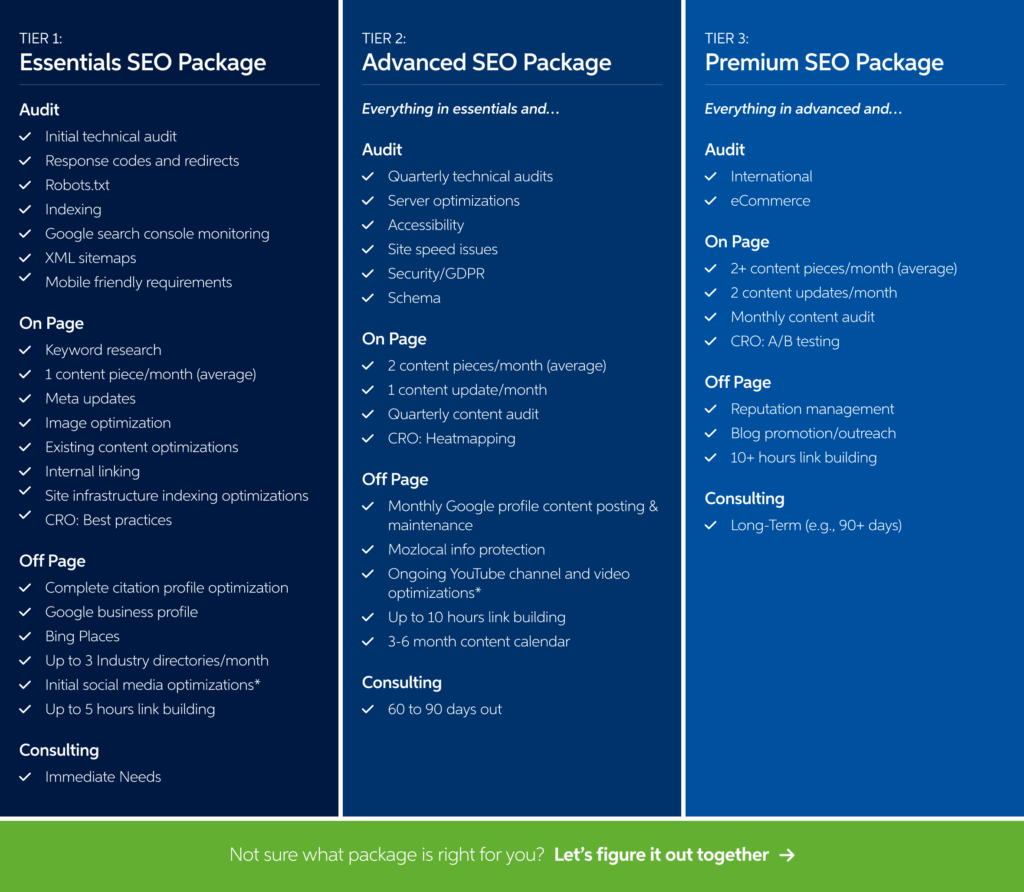Website migrations are complex projects that involve moving a website from one environment to another. This could mean changing the website’s domain, structure, hosting, or content management system (CMS). While a successful migration can significantly improve your website’s performance and user experience, it can also pose significant risks to your search engine rankings if not managed properly. That’s where an SEO migration checklist becomes essential.
What Is Website Migration?
Website migration refers to any event where a website undergoes substantial changes that could affect its search engine visibility. This could include a domain name or protocol change (including from HTTP to HTTPS), switching to a new CMS, redesigning the website, or moving to a new hosting platform. The primary goal of website migration is to improve site functionality, user experience, and search engine performance. However, without a thorough SEO plan, a migration can lead to traffic drops, broken links, and lost rankings. While some initial change in performance can always be expected during a migration, vigilance throughout the entire process can ensure that your efforts will pay off in the end.
How Does Website Migration Affect SEO?
Website migration or any significant website redesign can unfortunately impact your SEO due to the complex nature of search engine algorithms. Search engines rely on a variety of signals from your website to determine its relevance and ranking. When you migrate your site, these signals can be disrupted. This disruption can lead to lost rankings, decreased traffic, and a potential loss of revenue.
Common SEO issues during migration include:
❌ Broken links: Links that lead to a 404 error can disrupt the user experience and signal to search engines that your site is unreliable.
❌ Lost metadata: Missing title tags, meta descriptions, and header tags can reduce your site’s relevancy in search results.
❌ Duplicate content: Content duplication can confuse search engines and dilute your ranking potential.
❌ Changes in URL structure: Altered URLs can affect rankings and user experience if not properly redirected.
To avoid these pitfalls, it’s crucial to follow a comprehensive SEO migration checklist.
Website Migration SEO Checklist
A well-structured SEO migration checklist can help ensure a smooth transition while maintaining your search engine rankings.
While there are unique considerations for every migration, here’s a detailed checklist that covers the essentials every website owner and SEO specialist should follow when undertaking a migration:
SEO Migration Planning
✅ Audit your existing site: Perform a comprehensive SEO audit to understand your current SEO performance, including ranking keywords, backlinks, and site structure. This will provide a baseline to measure post-migration success.
✅ Benchmark key metrics: Record your current rankings, traffic, and other key SEO metrics to compare post-migration performance. This benchmarking will help you identify any issues quickly.
✅ Create a URL map: Develop a detailed map that outlines old URLs and their corresponding new URLs to ensure proper redirection. This step is crucial to maintain the link equity of your old pages.
Conducting a thorough SEO audit is essential, and MarTech tools like SEMrush, Screaming Frog, Ahrefs, or Moz can provide detailed insights into your site’s current SEO health. During this phase, it’s important to identify top-performing pages that drive the most traffic and conversions, ensuring special attention is given to these pages during migration. Additionally, understanding your backlink profile through tools like Majestic or Ahrefs is crucial to ensure you don’t lose valuable links during the migration.
SEO Migration Pre-Launch
✅ Set up 301 redirects: Implement 301 redirects from old URLs to new URLs to preserve link equity and ensure users land on the correct pages. This helps prevent traffic loss and maintains your site’s SEO integrity.
✅ Update internal links: Ensure all internal links are updated to reflect the new URL structure. Internal linking is vital for user navigation and SEO, so this step shouldn’t be overlooked.
✅ Review and optimize content: Ensure all content is optimized for SEO, including titles, meta descriptions, header tags, and keywords. This optimization ensures your content remains relevant and search engine friendly.
✅ Test the new site: Perform a thorough test of the new site in a staging environment to identify and fix any issues. Testing should cover functionality, usability, and SEO factors.
Ensure your new CMS or hosting environment supports SEO best practices, including fast load times, mobile-friendliness, and SSL certificates. A technical SEO review is necessary to check that aspects like robots.txt, XML sitemaps, and canonical tags are correctly configured in the new setup. Moreover, taking a complete inventory of your content using a content management tool will help ensure nothing is lost during the migration.
SEO Migration Post-Launch
✅ Monitor traffic and rankings: Track your site’s performance using tools like Google Analytics and Google Search Console to ensure there are no significant drops in traffic or rankings. Immediate post-launch monitoring can help catch and resolve issues early.
✅ Check for broken links: Use a crawler tool to identify and fix any broken links or 404 errors. Broken links can harm your SEO and user experience, so it’s crucial to address them promptly.
✅ Submit an updated sitemap: Submit your new sitemap to Google and other search engines to help them index your new site structure quickly. This step ensures your site is crawled and indexed efficiently.
✅ Review and adjust: Continually monitor your site and make necessary adjustments to optimize performance. Regular reviews can help maintain and improve your site’s SEO over time.
It’s vital to ensure that Google Analytics and other tracking codes are correctly implemented on the new site to verify that data is being collected accurately. Use Google Search Console to monitor for any crawl errors and fix them as they appear, regularly checking the Coverage report for any issues. Collecting user feedback can also help identify any navigation or usability issues that may have arisen post-migration.
Additional SEO Migration Checklist Considerations
Ensure clear communication with all stakeholders throughout the migration process. Regular updates can help manage expectations and address concerns promptly. Always have a backup of your old site before initiating the migration. This ensures that you can revert to the original setup if anything goes wrong during the migration. Finally, consider running targeted SEO campaigns post-launch to regain any lost rankings and boost your site’s visibility. This can include content marketing, link building, and social media promotions.
By following this detailed SEO migration checklist, you can ensure your website migration is successful and your search engine rankings remain intact. Website migrations are challenging but manageable with the right planning, execution, and monitoring.
Sagefrog & Search Engine Optimization
At Sagefrog, we understand the complexities of website migration and the importance of maintaining SEO performance throughout the process. Our B2B Search Engine Optimization services are designed to help you navigate these challenges with ease. From initial planning to post-launch optimization, we offer comprehensive SEO solutions tailored to your unique needs, as well as subscriptions to the latest and most cutting-edge SEO tools to ensure successful migration, monitoring, and improvements for your website’s performance.
To simplify this often overwhelming process, we offer three separate tiers of SEO packages to address client needs at any stage of their website migration or maintenance journey:
Our team of SEO experts has extensive experience in handling website migrations across various industries. We develop customized SEO strategies that align with your business goals and target audience, and ensure that your migration is smooth and your SEO performance remains intact post-migration.
Ready to migrate your website without compromising your SEO? Learn more about our B2B Website Development services and how we can help you achieve a seamless transition. Sagefrog is here to support your business every step of the way, ensuring a smooth migration and optimal SEO performance.
With Sagefrog’s expertise, your website migration can be a growth opportunity rather than a risk. Trust us to handle the complexities, so you can focus on your core business. Join us in the pond and contact Sagefrog today to get started on your successful website migration journey!


